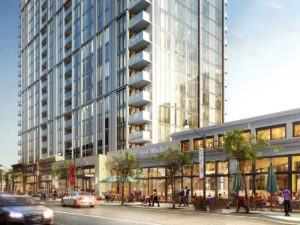On Oct. 8, Council Member Cam Gordon wrote on neighborhood forums:
“The second draft of the new Minneapolis 2040 Comprehensive Plan is now published and you are invited to a Second Ward Community Meeting to learn more, ask questions, share thoughts and hear from others on Monday, Oct. 15, 7 p.m. at Brackett Park, 2728 39th Ave. S.
“In the weeks ahead I will be reviewing the draft, gathering input and drafting potential amendments. I welcome your feedback. Comments can be sent directly to me but can also be submitted to the Planning Commission and City Council online at http://www.minneapolis2040.com<http://www.minneapolis2040.com]www.minneapolis2040.com<http://www.minneapolis2040.com>.
“There will be public hearings at the Planning Commission on Oct. 29 at 4 p.m. and before the City Council on Nov. 14 at 4:30 p.m., both in Room 317 in City Hall. I expect both the Planning Commission and the Council to make numerous amendments to the plan before the Council would approve it in December (probably the 7th). So, getting your thoughts about what to add, what to change and what not to change is appreciated.”
This plan will upzone the entire City to allow for greater density. At present, any significant change in zoning that might affect the character of a neighborhood would have to go through a neighborhood review process and be approved by the neighborhood group. This plan would take that power away from neighborhood groups and give it to developers. Every family home could become a triplex. A neighborhood could change dramatically overnight.
Carol Becker notes:
“This also means that any single-family home can be replaced with higher density without any input from the community. Our voice gets completely cut out of the process.
“And if you note that the parts of the city with large portions of white people are treated better than those parts of the city that have concentrations of people of color, you would be right. Funny for a plan that purports to address racial equity.
“There are also quite a number of streets that are mostly residential that are zoned to become commercial streets. These are mostly streets that have commercial nodes that the city wants to turn into full commercial streets. These include the following streets: 42nd Avenue from Lake to 38th Street; 28th Avenue from 38th Street to the Creek; all of Cedar Avenue South; all of Chicago Avenue South. This means businesses could move in on these streets even though the block is completely residential. Residents would have no say or ability to stop a business moving in next to them.”
There can be 10-story towers on transit routes up as far as 38th Street.
“Again, the parts of the city with high concentrations of people of color are treated worse than those with high concentrations of white people.”
Mary Paddock, a resident of Cedar-Isles, wrote about the plan:
“We have a beautiful city, with beautiful neighborhoods, each with their own unique character: areas of gracious old homes from North Minneapolis, to Milwaukee Avenue, to Kenwood Parkway—vibrant commercial areas scaled to fit into their neighborhoods. The random intrusion of highrises, McMansions and other visually disruptive architecture allowed by Minneapolis 2040 would all but destroy the unique character of our neighborhoods. A homogenized city isn’t a beautiful one, and neither does it elicit pride or investment.”























